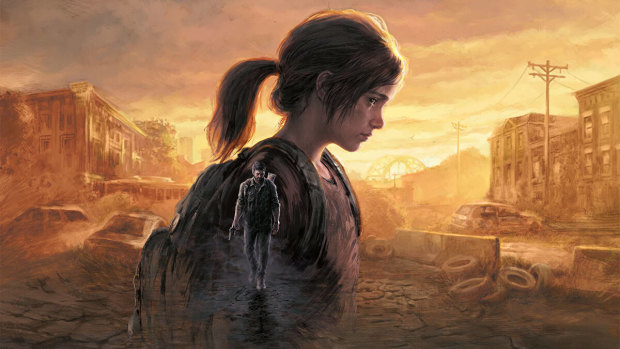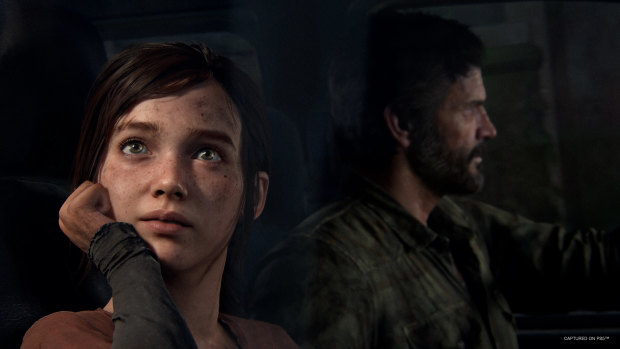The Last of Us is one of the most celebrated video games of all time, selling more than 17 million copies, hailed by critics as a masterpiece of interactive storytelling and soon to be adapted into a HBO TV show. But playing it in 2022 is more complicated than it might seem.
The 2013 PlayStation 3 game, which follows the relationship of a gruff old smuggler and a young girl in post-zombie-apocalypse America and is renowned for its brutal violence and thought-provoking story, is now almost a decade old. And though it can played on any modern PlayStation, there’s a clear gulf technologically between it and its 2020 followup The Last of Us Part II.
The Last of Us has been made again from the ground up with the latest tech, but returning players might not immediately notice all the differences.
Shortly after that game was finished the developers at Naughty Dog (which also brought us Crash Bandicoot, and Uncharted), decided to remake the original Last of Us. It could have been a fraught move — charging $125 for a new version of an old game in a culture where players have come to expect technological upgrades for free — but the developers felt there was value in bringing their latest tools to arguably their greatest achievement.
“There was a lot of pressure. How do you make the game better, but not augment it in any way that would change the feel,” said creative director Shaun Escayg.
“We always wanted to stay faithful to the core experience, to preserve everything that we love from the original game and just use all our technological and artistic development to build upon and enhance and heighten every aspect.”
The result is that The Last of Us Part I looks and plays in every way like a 2022 game, but returning players shouldn’t expect any differences in the story; it uses the exact same script and performances as the original, the exact same story and locations. Instead the differences come in how rich the environments are, and the much greater visual complexity of the characters and effects.
Early in the game an out-of-control car hits a petrol station, exactly as it did in the 2013 version. But this time, the blast casts an intense orange glare and dramatic shadows across the whole scene.
Escayg said entire areas of the game could now be realised closer to their original intent because of the advances in technology.
“The quarantine zone for example [where the characters begin their journey], we couldn’t really realise it on the PS3, there’s only so much the hardware could do. It’s the last bastion of humanity, it’s got all these people living on top of each other, it’s oppressive. Humanity is safe in here, but it has this underworld,” he said.
“Now if you look at Part I, we’re able to transport you there, make this world feel stifling, lived in, dangerous. Layers and layers of activity.”
Contrasting that, the lush overgrown and disgusting disease-filled areas outside the quarantine zone are also noticeably refreshed. Moss spirals around the character’s legs as they wade through water, while zombie fungus spores hang menacingly in the air around the infected. They’re all the same areas, they’re just imbued with a lot more life.
Ellie and Joel’s journey hits harder this time around.
Game director Matthew Gallant said the process was similar when it came to actually playing. From shooting or throwing molotov cocktails to climbing around the world, Naughty Dog’s technology has improved a lot in the past decade. But instituting it here without it feeling like the mechanics had come in from a completely different game took a lot of nuance. He said this was a big part of what separated the game from a straight remaster, which is what the team did for the game’s 2014 PS4 release.
“[A remaster] is almost just a tech or programming exercise. You take the original assets, port the engine to the next gen, and then say ok well we can bump up the texture resolution, increase the frame rate, push out the distance that objects start to fade out a little,” he said.
“But that’s just like numbers that you’re tweaking. You’re not fundamentally reconsidering the creative decisions or the art direction.”
One specific example of new tech can be seen in the animation, where the developers institute what they call motion match. Actors with motion capture gear give really long performances running in all kinds of directions and taking all kind of actions. As the player moves the character using the controller, the game blends these recordings to create a realistic-looking performance that’s also very responsive.
“Rather than this very canned animation you’re getting this constant, seamless, very organic movement,” Gallant said, adding that great care was taken to make sure playing as Joel still felt like playing as Joel.
“There’s a sense of weight, a sense of being an older man, a bruiser, someone who’s lived in this harsh world for 20 years. We want you to feel like you’re playing Joel but just the best, most smooth, most next-gen feeling version of Joel’s performances.”
Certain aspects of the PlayStation 5 hardware also help the game feel a lot more modern, including its 3D sound capabilities and haptic feedback. The PS5 controller has a different approach to vibration that’s almost like playing an audio file to get a whole range of different tactile feelings, which in the game is used to give texture to everything from ripping a bandage to patting animals.
One final and very important aspect of Naughty Dog’s technology brought over from Last of Us Part II is the accessibility suite.
For blind or low vision players there are audio indicators, modes that brightly highlight enemies and objects, and very detailed spoken descriptions of story scenes. For deaf players there are exhaustive visual indicators, and that PS5 vibration tech is used to play dialogue through the controller, so players can read subtitles while also getting a tactile sense of how lines are delivered. This all means players who were able to enjoy Part II because of the landmark accessibility options may now be able to go back and experience the original.
Get news and reviews on technology, gadgets and gaming in our Technology newsletter every Friday. Sign up here.
Most Viewed in Technology
From our partners
Source: Read Full Article

